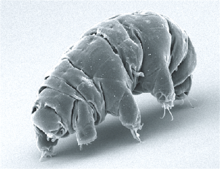OK, we have begun with some apparent hard facts! IMO, that's better than starting with an unanswered question...

Are qualia not the experiencing of expressed wavelengths in some form? (How do migrating birds use the earth's magnetic fields if not as wave frequencies?)
AFAIK, sets of wave length form dynamic fields, which may be experienced. Almost all electro-chemical networks have an associated dynamic fields. If I stand underneath a High Voltage tower with a florescent tube, the tube will light up, IOW, the bulb experiences an electro-chemical qualia!
Electromagnetic Field Lights Up Field of Florescent Tubes
(Note: I am
not saying that anything lights up inside the brain, but wave frequencies are dynamical physics.)
https://www.industrytap.com/floresc...-shinning-tapping-electromagnetic-fields/1763
Of course not. It is the problem we are examining. But we do have some
hard facts about microtubules which logically point to the major role they may play in the emergence of consciousness.
For one,
MT are bio-chemical dynamical self organizing nano scale bipolar (electromagnetic/chemical) coils which have been shown to play the major role in biological electro-chemical information processing and distribution. And they are present by the trillions in the bodies of all Eukaryotic organisms!
Electromagnetic coil
The magnetic field lines (green) of a current-carrying loop of wire pass through the center of the loop, concentrating the field there
(Note the resemblance to MT)
I for one am very interested in what Stuart Hameroff and Roger Penrose have to say about the potential role MT may play in the processing of sensory information. They and are the only ones with a logical hypothesis of ORCH OR, using a macro quantum function.
ORCH OR
(Orchestrated Objective Reduction)
I have already directed your attention to the site that's dedicated to the study and known role MT play in the "
processing of information". I can't discuss it here any further.
These are just a random selection of facts which set me on this extrapolation. I am not suggesting this is how it works, but offering some speculations based on known "hard facts".
At least it is an analytical start instead of the endlessly repeating "hard question", which no one seems to be able to work "downwards from qualia". Maybe we need to work upward from macro quantum toward qualia....







